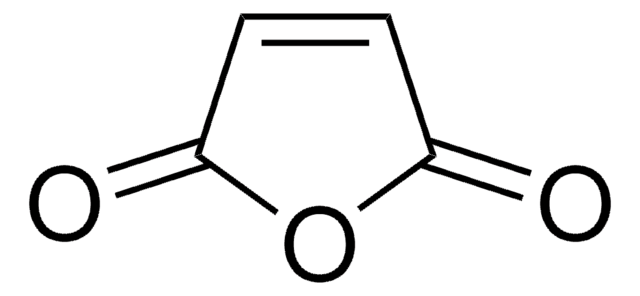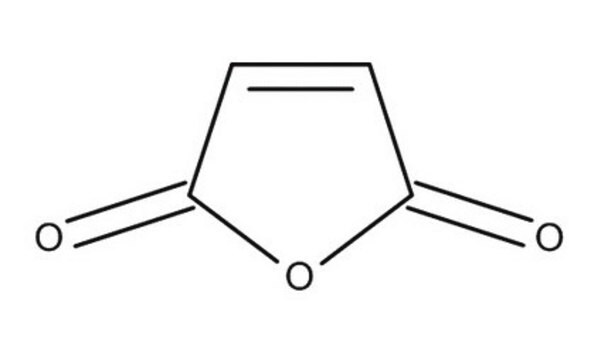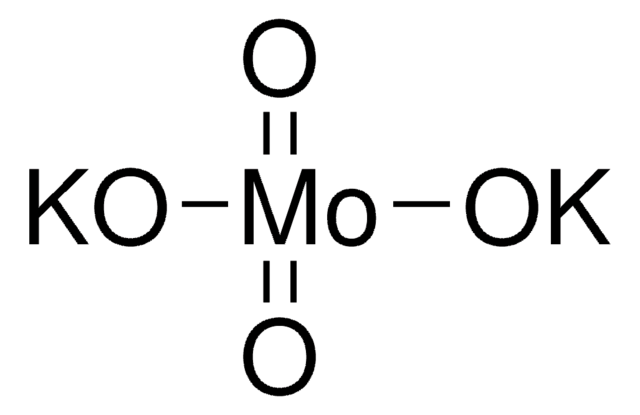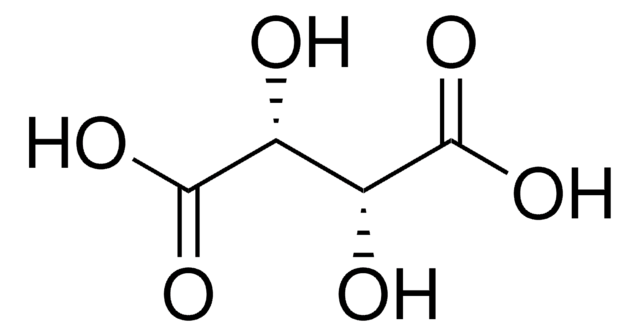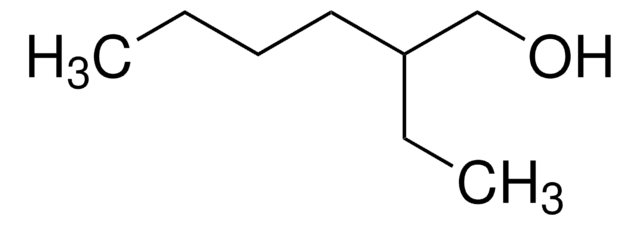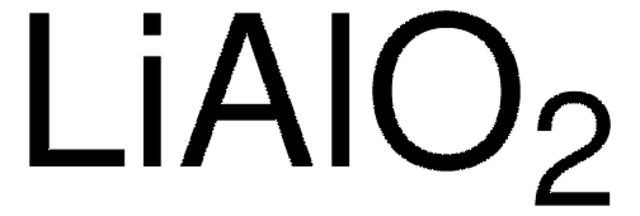400904
Lithium molybdate
99.9% trace metals basis
Sinónimos:
Dilithium dioxido(dioxo)molybdenum, Lithium Molybdate(VI), Lithium Molybdenum Oxide, Lithium metamolybdate
About This Item
Productos recomendados
Quality Level
assay
99.9% trace metals basis
form
powder or crystals
reaction suitability
reagent type: catalyst
core: molybdenum
greener alternative product characteristics
Design for Energy Efficiency
Learn more about the Principles of Green Chemistry.
sustainability
Greener Alternative Product
impurities
≤1500.0 ppm Trace Metal Analysis
density
2.66 g/mL at 25 °C (lit.)
greener alternative category
, Enabling
SMILES string
[Li+].[Li+].[O-][Mo]([O-])(=O)=O
InChI
1S/2Li.Mo.4O/q2*+1;;;;2*-1
InChI key
NMHMDUCCVHOJQI-UHFFFAOYSA-N
General description
Application
signalword
Warning
hcodes
Hazard Classifications
Eye Irrit. 2 - Skin Irrit. 2 - STOT SE 3
target_organs
Respiratory system
Storage Class
13 - Non Combustible Solids
wgk_germany
WGK 1
flash_point_f
Not applicable
flash_point_c
Not applicable
ppe
dust mask type N95 (US), Eyeshields, Gloves
Elija entre una de las versiones más recientes:
¿Ya tiene este producto?
Encuentre la documentación para los productos que ha comprado recientemente en la Biblioteca de documentos.
Artículos
Nanomaterials for Energy Storage in Lithium-ion Battery Applications
Increasing fuel costs and concerns about greenhouse gas emissions have spurred the growth in sales of hybrid electric vehicles (HEVs) that carry a battery pack to supplement the performance of the internal combustion engine (ICE).
Professor Qiao’s laboratory lays out recent advances in conversion type lithium metal fluoride batteries. This review explores key concepts in developing electrochemically stable microstructures for wide Li-ion insertion channels.
Discover more about advancements being made to improve energy density of lithium ion battery materials.
Nuestro equipo de científicos tiene experiencia en todas las áreas de investigación: Ciencias de la vida, Ciencia de los materiales, Síntesis química, Cromatografía, Analítica y muchas otras.
Póngase en contacto con el Servicio técnico